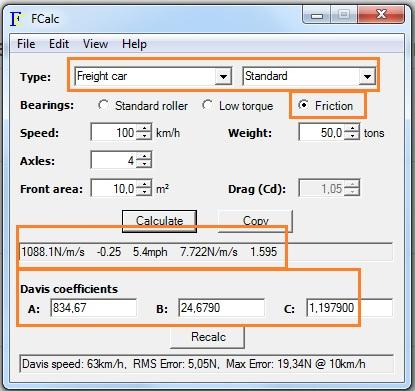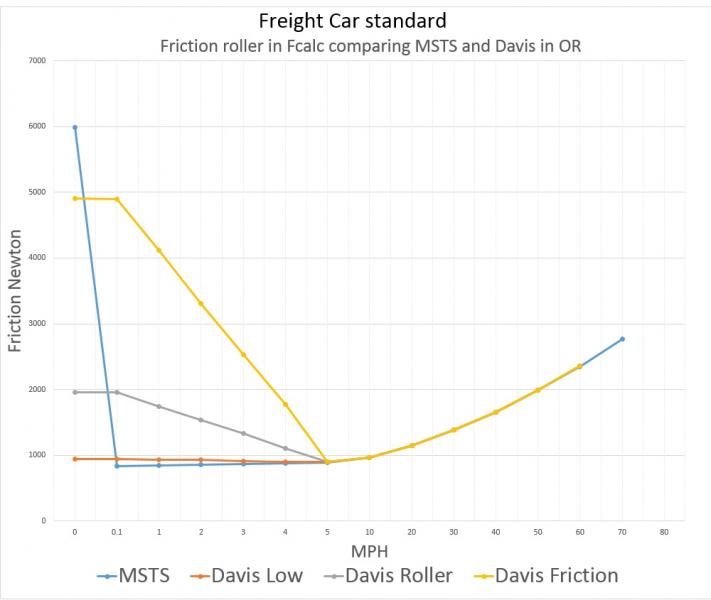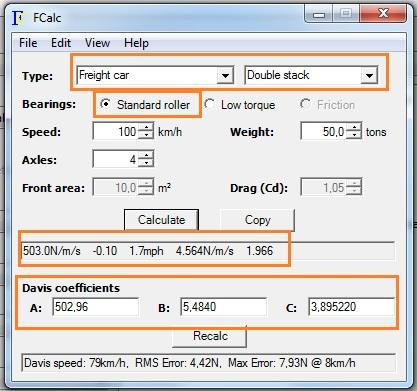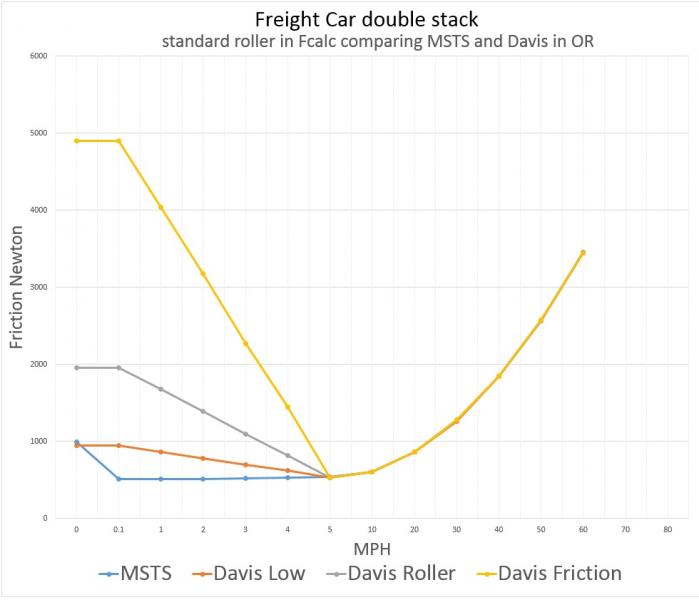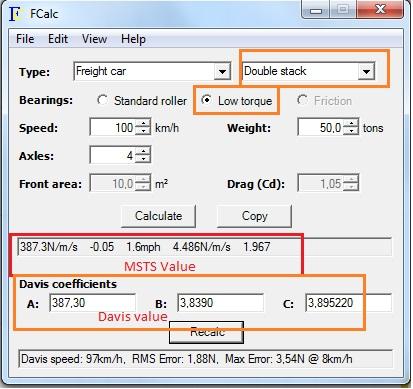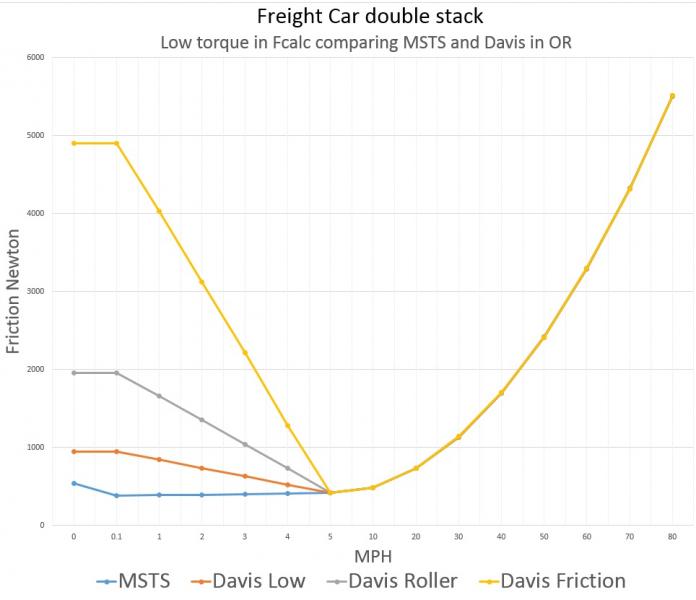Hi
Comparison of
Friction Bearing and
standard roller and
Low torque on rail wagons at various speeds 0-60 mph.
Although comparison between MSTS values and Davis Values.
The first picture is the values I entered in Davis and MSTS values in wag file.
Second image is the result of the test, and so on.
In picture 2 so not lean curve as in Figure 4 and 6, and it depends on
to the standard carriage compared with double stack wagons not have much air drag i think.
Facts to be drawn from the data.
From 5 mph to 70 mph , it is basically the same results, Davis and MSTS values.
it differs only a few percent.
But from 0-5 mph ,it is big differences.
Friction Bearings
On friction bearing MSTS values are the high resistance in start but in 0.1 mph so is the normal.
This is probably not okay
Davis values are high in start and at 5 mph as it becomes normal.
Are that normal?.
link Got this from someone.
(Solid bearings float on a very thin film of oil. Friction at starting speeds would vary by how long the cars have sat idle -- long enough and most of the oil film drips away into the journal box. And so the slope you see in zero to 5mph is actually worse case at regular temperatures and not what would happen in all situations. The extra friction attributed to cold weather again is only applicable to when the cars have sat long enough for the oil film to drip away and the rate in which the slightly congealed oil wicks back up to the axles is slower that would be the case at warmer temperatures.
IOW the whole concept of extra friction at starting speed is really about the passage of time and not speed. Apparently by the time you get your freight train up to 5 mph enough time has passed to wick the oil into place.)
Roller Bearings
Why is 5 mph in the roller bearing it should be like in MSTS that it instantly becomes normal during movement i think.
Info Start friction Davis in Or Now
1. Solid Bearings ..... ORTSBearingType ( Friction )
22 * wagon Weight ton =lbs * 4.4482= Newton start friction (0-5 mph)
2. Roller bearings .... ORTSBearingType ( Roller )
9 * wagon Weight ton =lbs * 4.4482= Newton start friction (0-5 mph)
3. Low (Low Torque) ORTSBearingType ( Low )
4.4 * wagon Weight ton = lbs * 4.4482= Newton start friction (0-5 mph)
Bye
 steamer_ctn, on 14 May 2014 - 03:01 AM, said:
steamer_ctn, on 14 May 2014 - 03:01 AM, said:
 Log In
Log In Register Now!
Register Now! Help
Help







